Exploring WebAssembly (WASM)
WebAssembly Core Concepts
WASM Tools and Ecosystem
WebAssembly (WASM) has grown far beyond a simple runtime format—it now boasts a comprehensive toolchain and vibrant ecosystem that enhance development, testing, and deployment. In this guide, we’ll dive into the key components of the WASM ecosystem, explain why they matter, and show you how to leverage them in your projects.
Why Tools & Ecosystem Matter
In any craft, having the right tools can make the difference between a smooth process and a challenging one. For WebAssembly, a mature ecosystem simplifies development workflows, optimizations, and cross-platform deployment.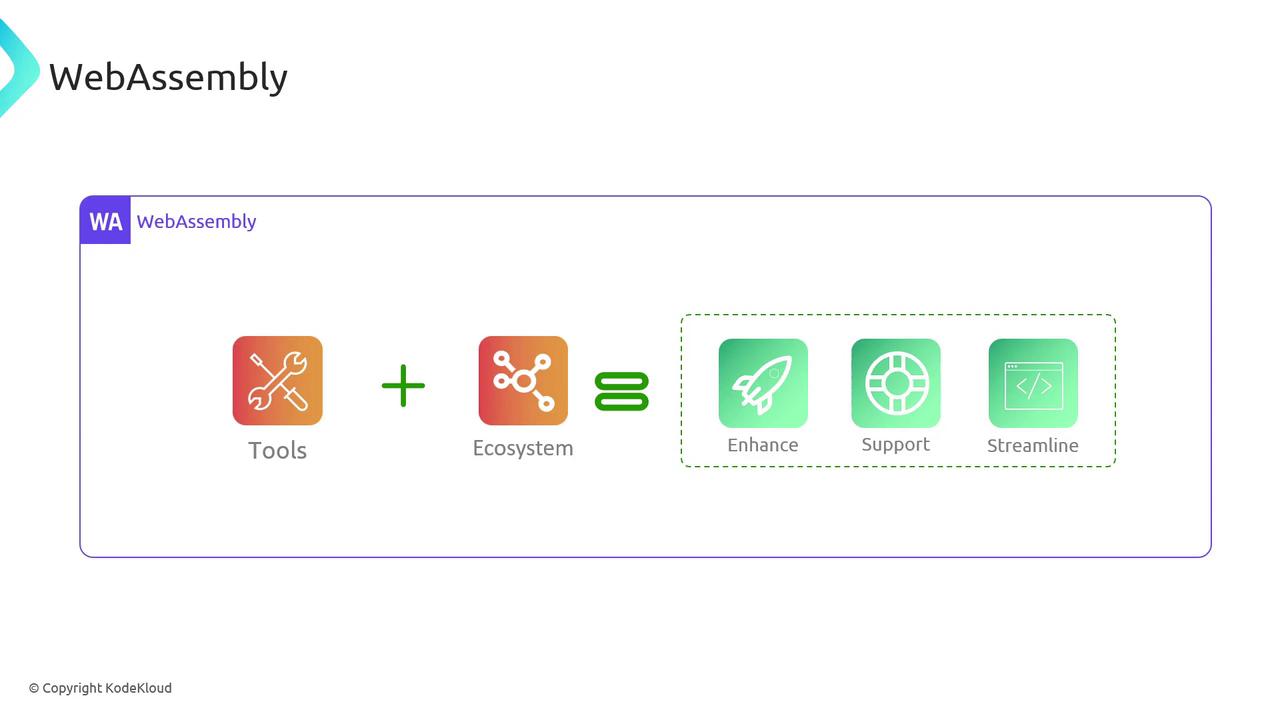
WASM Landscape Overview
The Cloud Native Computing Foundation (CNCF) maintains an interactive WASM Landscape, categorizing languages, runtimes, and frameworks to help you choose the right stack.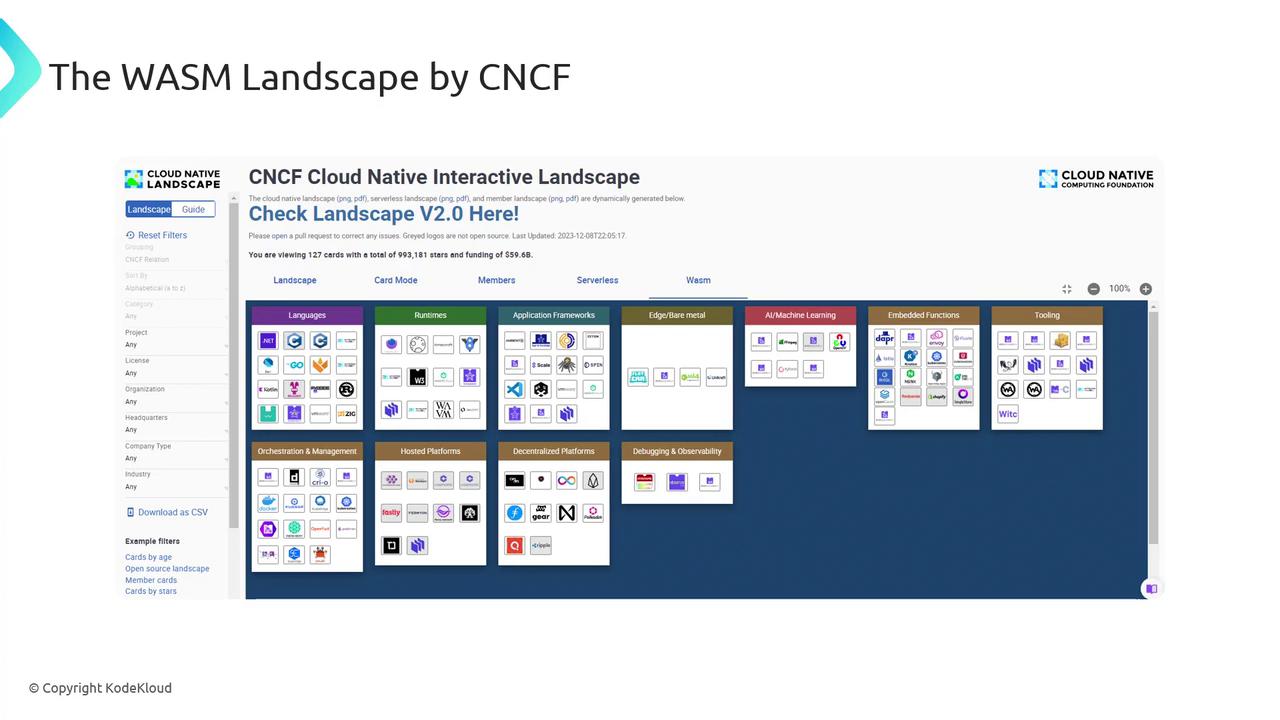
Note
Explore the CNCF WASM Landscape for the latest tools, libraries, and community projects: https://github.com/cncf/wasm-landscape
Programming Languages
WebAssembly’s language-agnostic design means you can target WASM from many languages:
| Category | Languages | Compilation Model |
|---|---|---|
| Compiled | C, C++, Rust, Zig | Direct to WASM bytecode |
| Managed | Kotlin, Dart | Leverage WASM GC proposals |
| Script Interpreters | JavaScript, Ruby | Embed existing VMs in WASM |
| WASM-Native | Moonbeam, Grain | Built specifically for WASM |

Runtimes
A WASM runtime provides sandboxing, performance guarantees, and host APIs. Popular options include:
| Runtime | Language Support | Features |
|---|---|---|
| WasmEdge | Rust, C/C++, Go | High-performance edge runtime, WASI 1.0 |
| Wasmtime | Rust, AssemblyScript | Just-in-time (JIT) & ahead-of-time (AOT) |
| WAMR | C, JS | Lightweight, ideal for constrained devices |
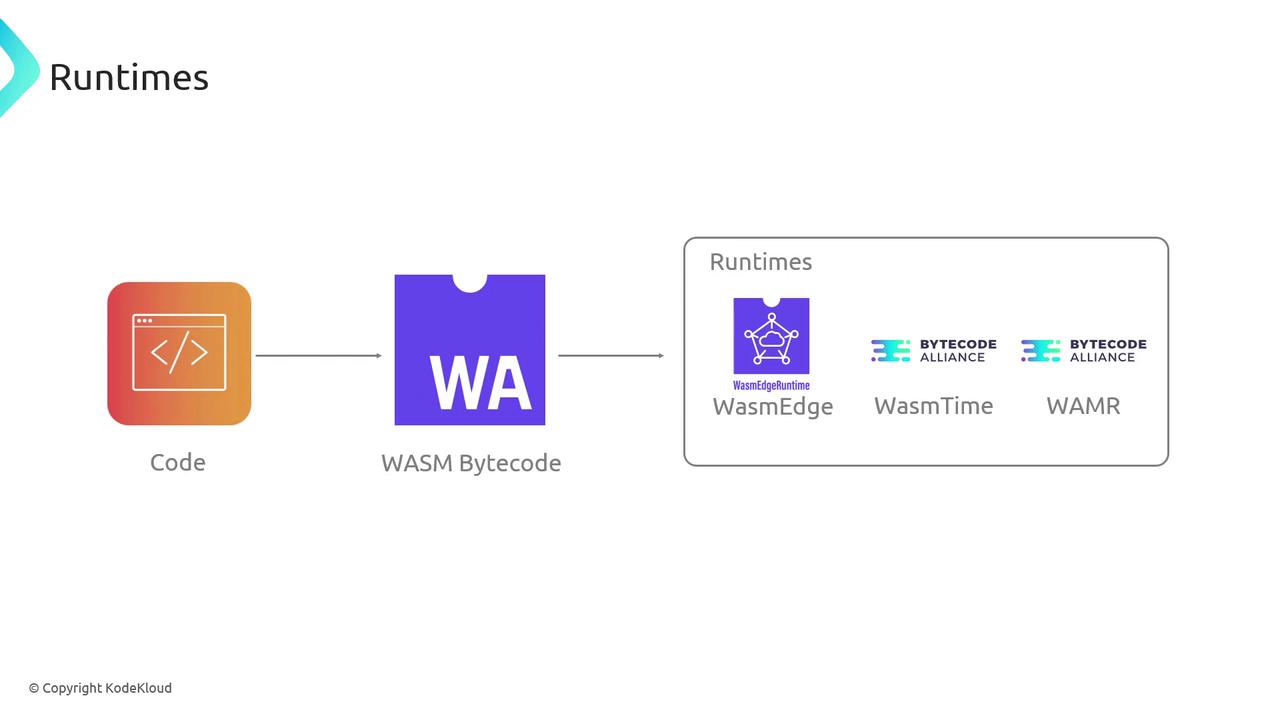
WasmEdge Runtime
Think of a WASM runtime as a minimal operating system for your module. The WasmEdge runtime provides advanced POSIX APIs, allowing unmodified Rust and JavaScript frameworks to run securely in a WASM sandbox.
Libraries & Frameworks
To accelerate application development, consider these frameworks:
- Spin: Build and scale WebAssembly microservices with an event-driven model.
- WasmCloud: A distributed application platform that abstracts messaging, key-value stores, and SQL.

Cross-Platform Portability
WASM modules run consistently across OS and CPU architectures, making them ideal for Edge and IoT:
- Genode: Component-based OS for secure edge applications.
- SeL4 RTOS: Proven microkernel for real-time use cases.
- Flatcar Container Linux: Lightweight container host with WASM support.
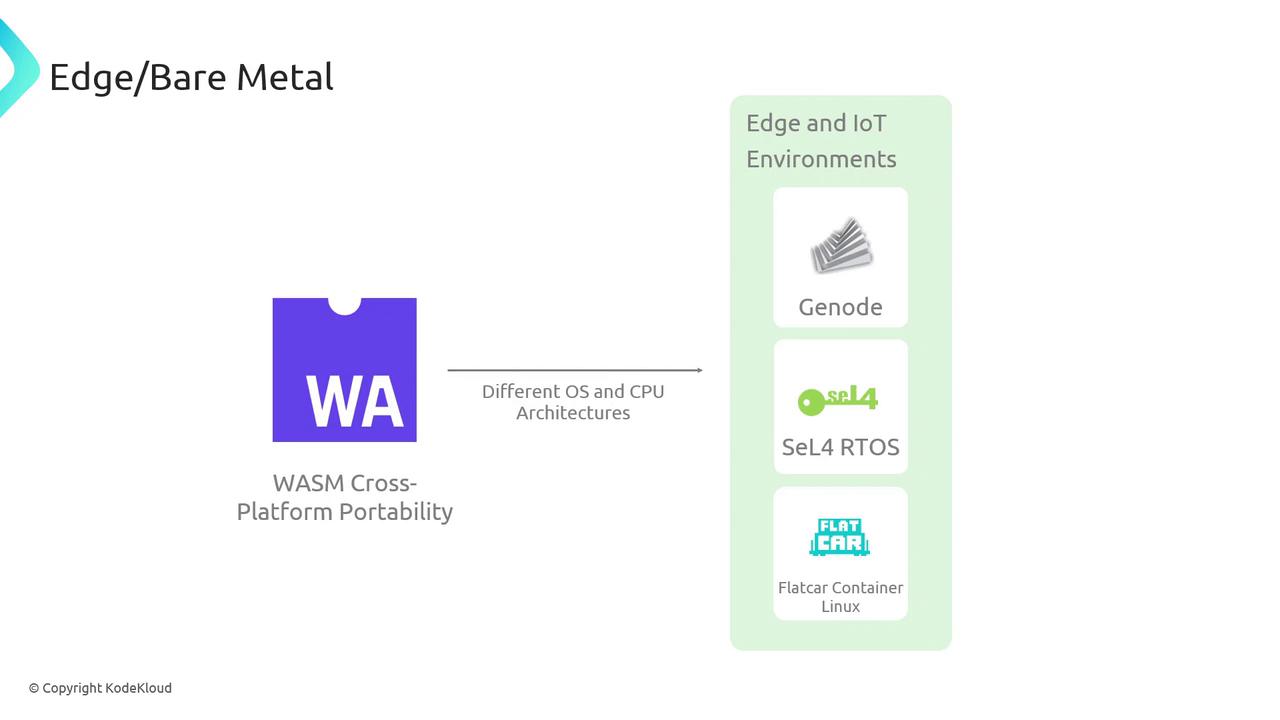
AI & Machine Learning
WASM is gaining traction for cloud-native inference. Runtimes like Wasmtime and WasmEdge integrate with native AI/ML libraries:
| Framework | Language Bindings | Use Case |
|---|---|---|
| OpenCV | C++, Python | Image processing in-browser |
| PyTorch | Python, Rust | Edge inference |
| TensorFlow | C, JavaScript | Browser & server inference |
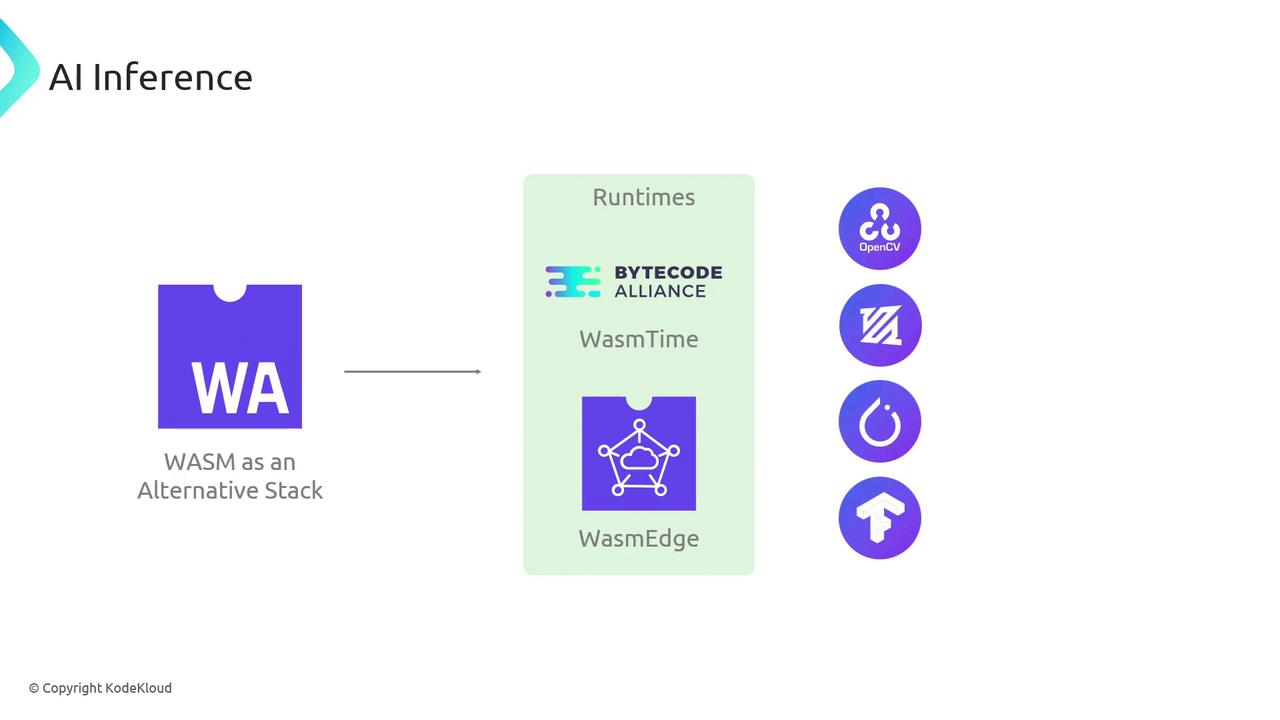
Embedded Functions
Databases are embedding WASM to run safe, fast user-defined functions (UDFs):
- LibSQL: Run WASM-based stored procedures in SQLite.
- OpenGauss: Secure extension framework for enterprise workloads.
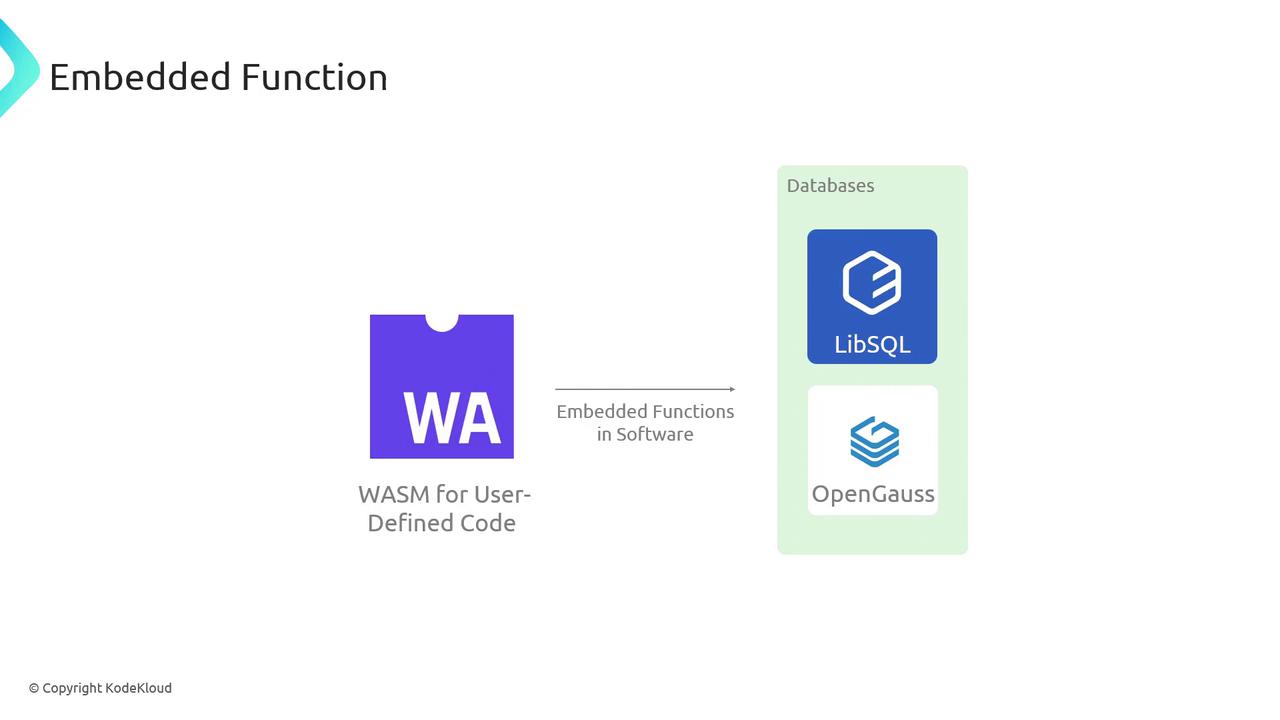
Tooling
A mature ecosystem thrives on reliable tooling:
| Tool | Purpose |
|---|---|
| Cargo | Rust package manager and build tool |
| LLVM | Compiler backend for multiple languages targeting WASM |
| Binaryen | WASM binary optimizer and IR toolkit |
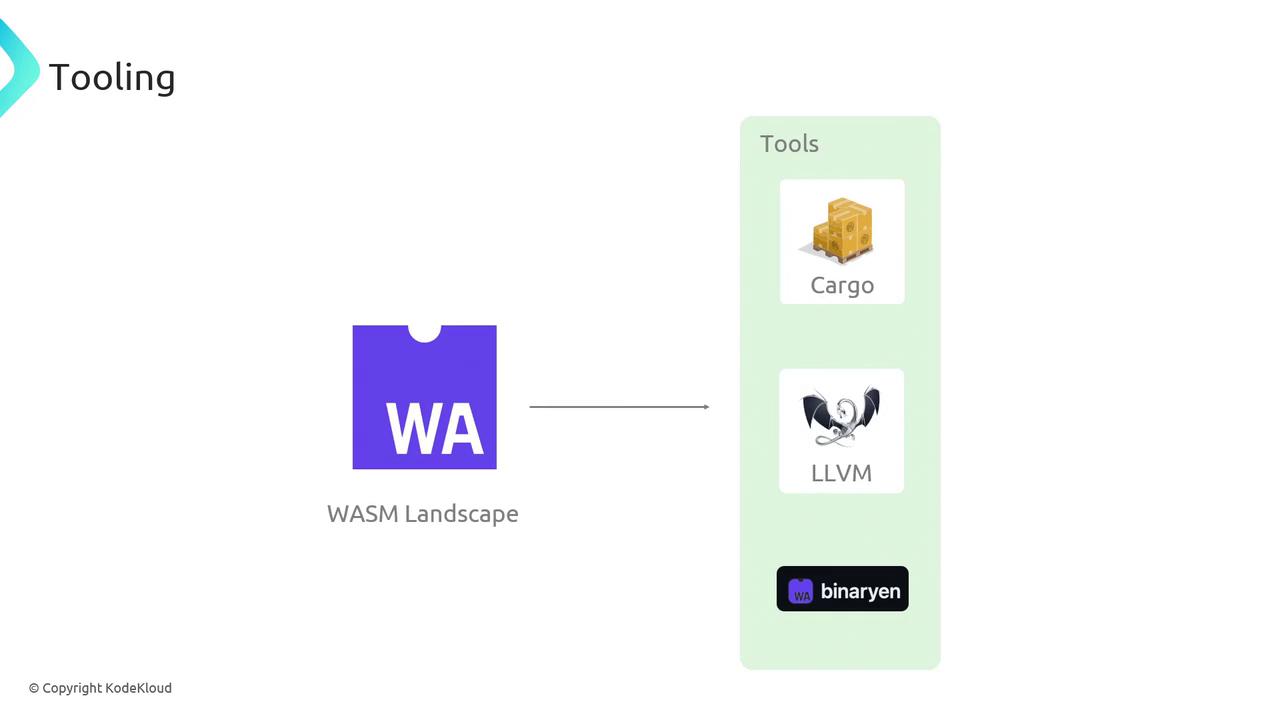
Deployment
Deploy WASM modules alongside containers in Kubernetes, Docker, and containerd:
- Docker: Build
Dockerfilewith--platform=wasm/wasm - Kubernetes: Use KubeEdge or custom runtimes
- containerd: Native support via WasmShim
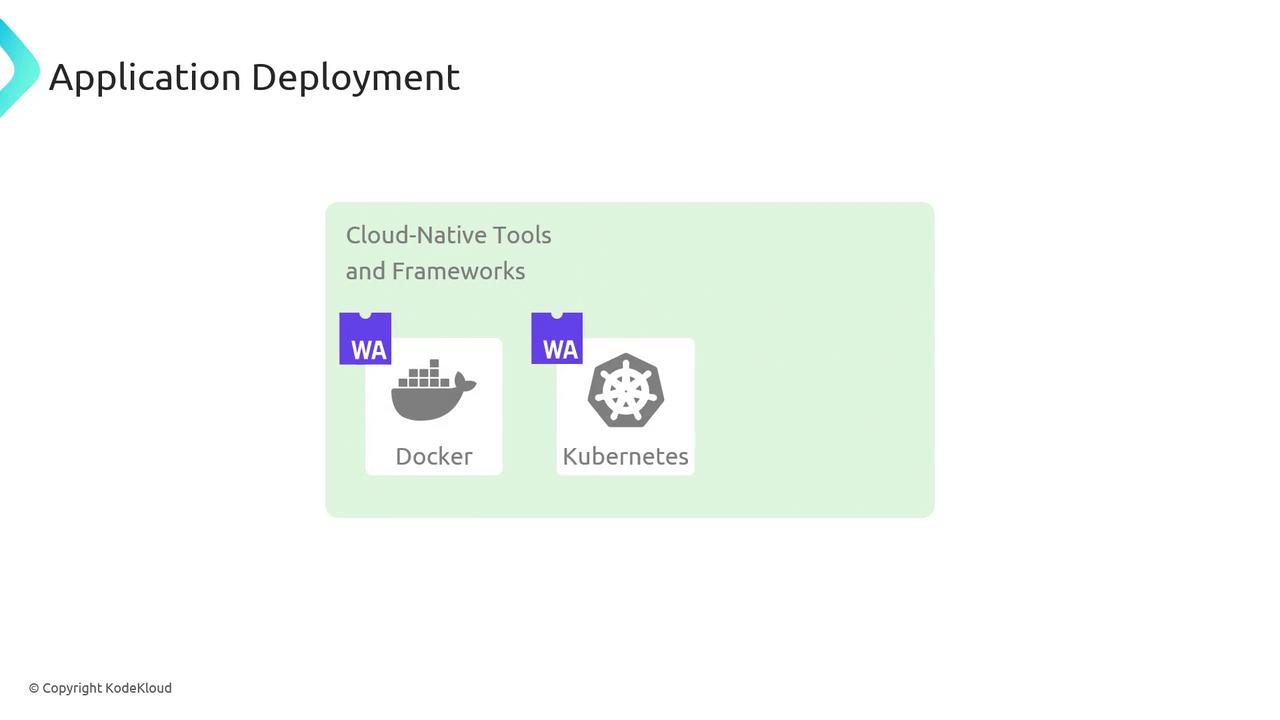
Warning
Verify your runtime’s security model and WASI compliance before deploying to production.
Package Repositories
Manage and distribute WASM artifacts using familiar repositories:
- Docker Hub: Host OCI-compatible WASM modules.
- Harbor: Enterprise-grade registry with vulnerability scanning.
![]()
Links & References
- CNCF WASM Landscape
- WebAssembly.org Documentation
- WASM Working Group
- WASI Specification
- Bytecode Alliance
Watch Video
Watch video content